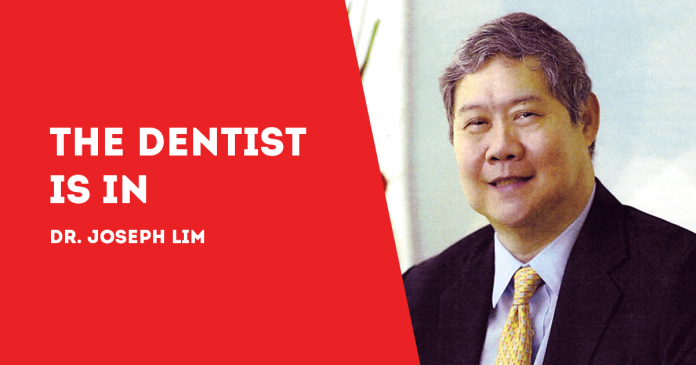
(By Dr. Joseph D. Lim and Dr. Kenneth Lester Lim, BS-MMG, DDM, MSc-OI)
TWICE a year.
That’s the ideal frequency that we should visit the dental clinic. Or having a dental cleaning: twice a year.
Or brushing our teeth, at least twice a day. Or, ideally, after each and every meal.
But how often should we replace our toothbrush? Now that’s a good question. That’s because there is a chance of oral health issues, like tooth decay, when you don’t replace the toothbrush at the proper time.
The answer is sooner rather than later when the toothbrush bristles are frayed.
A toothbrush that is not in optimal condition may even cause tooth decay and gum disease.
You will know this when gums start to look redder than it usually is, it bleeds, and you have halitosis or bad breath. That’s the advice from the National Institute of Dental and Craniofacial Research.
It is best to avoid gum disease because, left untreated, it can lead to loss of tooth or teeth.
The bacteria that causes gum disease can also travel to other parts of the body through the bloodstream.
Gum disease may cause or worsen heart disease, respiratory disease, rheumatoid arthritis, and diabetes, according to the American Academy of Periodontology,
Bacteria and food that stick on the teeth surface may together cause plaque to form on teeth. Plaque is the sticky film on the teeth surface that contains bacteria. Plaque thrives on the sugar and starch from the leftover food to produce acids that can erode the outer enamel layer of teeth. This may lead to tooth decay and loss of a tooth or teeth.
The calcium and phosphate in saliva (and fluoride in toothpaste) repair the enamel. But not if your diet is sweet and has plenty of starch, if you don’t brush your teeth regularly and you don’t replace your toothbrush, says the National Institute of Dental and Craniofacial Research.
“We want to have the right tools, make sure they’re in the right condition and know how to use them,” says Dr. Sally Cram, a spokesperson for the American Dental Association (ADA).
Plaque and bacteria should be brushed from the mouth at least once every day. Less than that and plaque and bacteria may cause gum disease, says Dr. Cram.
The ADA recommends that a toothbrush should be replaced three times to four times a year. Even less than that time if the bristles are no longer in good condition, when the tips or strands of the bristles start to untangle.
For those with crowns and fillings, the toothbrush wears out faster. That’s because of the contact with uneven surfaces and rough edges of the crowns and fillings. You’ll known when that’s the case when the strands of the toothbrush bristles start to fray.
At this time of the pandemic, it’s probably advisable to change your toothbrush more often. That’s the case anyway even without COVID-19 when one gets sick with a highly communicable disease.
The reason: the old toothbrush may be a way to get infected again as disease-causing bacteria may still lurk in the bristles. Change your toothbrush after you recover from a contagious sickness to prevent a potential re-infection.
Indeed, change your toothbrush after it gets into contact with dirty places.
Frayed bristles cannot get down to the gum tissue, and that may spell trouble later on.
So check the bristles of your toothbrush now.
***
Dr. Joseph D. Lim is the former Associate Dean of the College of Dentistry, University of the East; former Dean, College of Dentistry, National University; Past President and Honorary Fellow of the Asian Oral Implant Academy; Honorary Fellow of the Japan College of Oral Implantologists; and Honorary Life Member of the Thai Association of Dental Implantology. For questions on dental health, e-mail jdlim2008@gmail.com or text 0917-8591515.
***
Dr. Kenneth Lester Lim, BS-MMG, DDM, MSc-OI, graduated Doctor of Dental Medicine, University of the Philippines College of Dentistry, Manila, 2011; Bachelor of Science in Marketing Management, De la Salle University, Manila, 2002; and Master of Science (MSc.) in Oral Implantology, Goethe University, Frankfurt, Germany, 2019. He is an Associate professor; Fellow, International Congress of Oral Implantologists; Member, American Academy of Implant Dentistry and Philippine College of Oral Implantologists. For questions on dental health, e-mail limdentalcenter@gmail.com/PN





